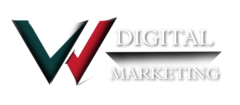Technical v/s Creative Writing
Technical writing and creative writing are two distinct forms of writing, each with its own goals, style, and audience. Here’s a detailed comparison of the two:
1. Technical Writing:
- Definition: Technical writing is a form of writing that conveys specific information in a clear, precise, and structured manner, often about technical or specialized topics.
- Purpose: To inform, instruct, or explain complex concepts in a way that is easily understandable and actionable by the reader.
- Audience: Typically intended for an audience that needs clear, factual information to achieve a specific outcome, such as professionals, employees, engineers, or users.
- Tone: Objective, formal, and neutral. The focus is on clarity and accuracy, not on emotional engagement or personal style.
- Structure: Highly structured, with a logical flow. Often uses headings, bullet points, diagrams, and glossaries to improve clarity.
- Language: Uses precise, straightforward language, often with industry-specific jargon or terminology.
- Creativity: Limited creativity, as the focus is on delivering factual, functional information. Creativity may be used in terms of layout or presentation for clarity, but not in the content itself.
- Examples:
- User manuals, technical guides, standard operating procedures (SOPs)
- Scientific reports, research papers
- Product documentation or software tutorials
2. Creative Writing:
- Definition: Creative writing is a form of writing that emphasizes imagination, expression, and narrative to tell a story or evoke emotions in the reader.
- Purpose: To entertain, inspire, provoke thought, or convey a story, emotion, or idea through an artistic and often personal style.
- Audience: A broad audience, depending on the genre. The audience could be readers of fiction, poetry enthusiasts, or fans of literary or personal writing.
- Tone: Can vary widely from formal to informal, depending on the style and purpose of the writing. The tone can be humorous, serious, emotional, etc.
- Structure: Flexible structure, often dictated by the needs of the story or piece. Creative writing allows for experimentation with structure, including non-linear storytelling, free verse, or abstract forms.
- Language: Often rich, descriptive, and figurative, with a focus on literary devices like metaphors, similes, and symbolism.
- Creativity: Central to creative writing, as the writer often uses unique language, storytelling techniques, and imaginative concepts to engage the reader.
- Examples:
- Fiction (novels, short stories)
- Poetry, personal essays, screenplays
- Creative non-fiction, memoirs, or blogs focused on storytelling
Key Differences:
| Aspect | Technical Writing | Creative Writing |
|---|---|---|
| Purpose | To inform, explain, or instruct. | To entertain, inspire, or evoke emotions. |
| Audience | Professionals, technicians, or users needing factual information. | A broad audience, often seeking entertainment or personal connection. |
| Tone | Objective, formal, neutral. | Varied, often subjective and expressive. |
| Structure | Highly structured, logical, and standardized. | Flexible, often experimental, or narrative-driven. |
| Language | Clear, concise, precise, often with technical jargon. | Rich, descriptive, figurative, and imaginative. |
| Creativity | Minimal, focusing on clarity and function. | Central to the form, focusing on artistic expression and narrative. |
| Examples | Manuals, white papers, instruction guides. | Novels, poetry, screenplays, and memoirs. |
More Detailed Comparison:
- Focus:
- Technical Writing: The focus is on accuracy, functionality, and clarity. The goal is to ensure that the reader understands specific processes, concepts, or instructions.
- Creative Writing: The focus is on expression and storytelling. The goal is to engage the reader’s imagination and emotions.
- Style:
- Technical Writing: Uses a direct and impersonal style. It prioritizes the transfer of knowledge, often employing bullet points, diagrams, and flowcharts to help readers follow instructions or concepts.
- Creative Writing: Personal and expressive, with more emphasis on style, character development, narrative arcs, and emotional depth. It embraces a variety of literary devices and techniques.
- Reader Engagement:
- Technical Writing: Engages readers by being clear, concise, and informative, ensuring the reader understands and can act upon the information. It avoids ambiguity.
- Creative Writing: Engages readers through emotion, imagination, and storytelling, drawing them into the narrative or the world the writer creates.
- Outcome:
- Technical Writing: The desired outcome is for the reader to follow instructions, understand a procedure, or learn a technical concept.
- Creative Writing: The desired outcome is to make the reader feel something—whether it’s entertained, inspired, or moved by the story.
Summary:
- Technical Writing is informative, instructional, and factual. It seeks to deliver clear, actionable information with no ambiguity.
- Creative Writing is imaginative, emotional, and expressive. It uses storytelling and literary techniques to engage the reader on a deeper, more personal level.
Each type of writing has a specific purpose and requires a different skill set, though both are essential in their respective fields.
You Can Also Read My Post About
Tips To Craft Content That Engages and Converts Your Audience
